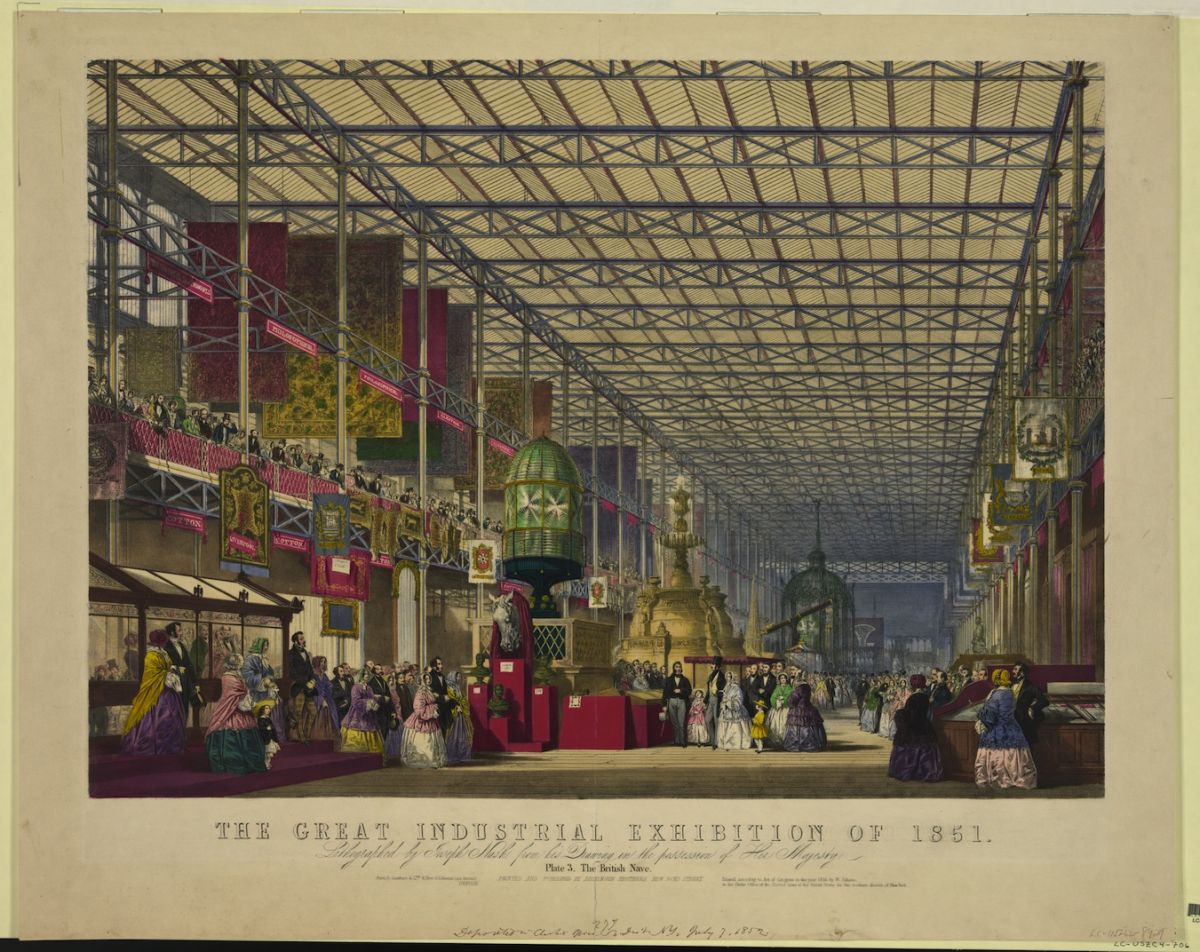These days, you can hear about self-driving cars when you turn on the news, or you can browse store shelves for high-tech gadgets. But in the mid-nineteenth century, there was one go-to place for the public to view scientific achievement: the Great Exhibition.
The Great Exhibition of 1851 brought together the latest of the world’s marvels. And your local shopping mall has nothing on the Crystal Palace, the immense structure that housed the Exhibition. It stretched a third of a mile long, nearly 130 feet tall, and spanned almost a million square feet. The Crystal Palace was built in a mere five months out of iron frames and glass panels, like a giant greenhouse. Its construction represented a triumph of engineering, as it was the first large building made of prefabricated materials.
Within the Crystal Palace, countries set up their displays of art, natural materials, and especially scientific inventions. The Exhibition’s six million visitors could see everything from the electric telegraph to state-of-the-art steam engines to an early version of the fax machine. The Great Exhibition’s organizers were especially excited for creations that served industry: automatic looms, water pumps, hydraulic presses, vulcanized rubber. These innovations showed attendees new mechanics, discoveries, and technologies that directly affected their lives.
The Great Exhibition spurred the tradition of the World Fair, huge expositions that showed the everyday citizen international advances in everything from agriculture to chemistry to meteorology. And its profits funded a host of institutions that still thrive today, such as London’s Science Museum, and its Museum of Natural History. With a legacy of making science publicly accessible, the Great Exhibition changed history.










